*Originally published 3/6/18. Updated 7/20/18.
There’s a lot of confusion about yoga, so to enlighten everyone with one article, here are all the most popular types of yoga styles you need to know about.

If you have questions with regard to a specific style, I go into further detail past this introductory list. So keep reading!
Top 14 Types of Yoga Poses:
- Anusara
- A heartfelt and accepting style open to less standard positions.
- Ashtanga
- Rapid and flowing from one pose to another linked by the breath.
- Bikram
- (a.k.a. Hot Yoga) 90-minute yoga session consisting of 26 postures repeated twice in a sauna set at 105º F and 30 to 50% humidity.
- Hatha
- Basic and classical approach to yoga.
- Iyengar
- Purist style (a.k.a. Furniture Yoga), where straps, blocks and boards are used to help gain perfectly aligned positions.
- Jivamukti
- Translates to “liberation while living.” Pushes the physical limits and refer to traditional spiritual elements (chants, ancient scripture, etc.).
- Kripalu
- Three-part practice with specific goals in learning and accepting your body.
- Kundalini
- A fluid style of constant movement to release deep energy and invigorate.
- Prenatal
- A yoga-style specifically catered to expectant or post-birth mothers to help strengthen muscles in a way that quickly returns them to normal after birth.
- Restorative
- Focused on relaxation and simplistic poses meant to psychically cleanse with four to five simple poses.
- Sivananda
- A style based on the philosophy of a healthy yogic lifestyle with twelve basic asanas and variations.
- Viniyoga
- An individualized and adapted practice meant to decrease the chance of injury through PNF (proprioceptive neuromuscular facilitation).
- Vinyasa (Power)
- A Westernized ashtanga system adapted for active, athletic, and aerobically geared yogis.
- Yin
- (a.k.a. Taoist Yoga) A system that focuses on quiet, meditative yoga poses meant to lengthen connective tissues through gravity-led relaxation.
These fourteen styles are extensively used throughout the West.
The rest of this article will go into more detail for each style in terms of the origin of the name, what it’s about, the history, and the benefits.
I hope this helps widen your horizons as far as your yoga experience! Few know about the fact yoga has so many styles. Yoga is not just “yoga,” each class utilizes different poses and postures from different styles.
Be sure to read over each section! I’ve written down everything you need to know about each of these different yoga styles!
1. Anusara
Roughly translates to “flowing with grace,” “going with the flow,” or “following your heart.”
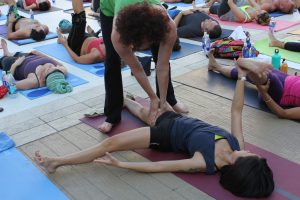
Known as a modern-day Hatha yoga system founded in 1997 by John Fiend. The premise that we are all inherently good, this yoga style highlights the importance of body alignment, the balance of heart and mind, circulation, good health and well being.
The benefits of Anusara yoga includes an improved balance of heart and mind, strengthened body, improved flexibility, and faster healing injuries. Balance is the main goal.
2. Ashtanga
Roughly translates to “eight-limbed yoga.”
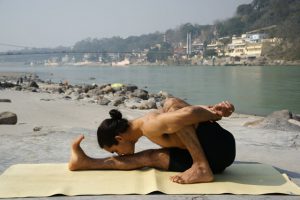
Ashtanga yoga was originally recorded by the sage Vamana Rishi and was handed down eventually into the hands of Pattabhi Jois who began teaching it at the Ashtanga Yoga Research Institute in 1948. Ashtanga, however, can be traced back to 200 B.C.E.
The benefits of the Ashtanga style includes internal cleansing, detox, and improve the body (to feel healthy, light and strong). This system incorporates movements from vinyasa and tristhana.
3. Bikram
Generally known as “Hot Yoga.”
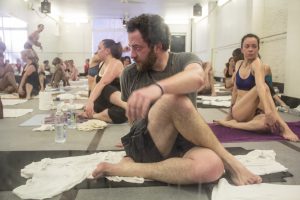
Created in 1972 by Bikram Choudhury (hence, the name) where basic hatha yoga techniques and variations are set in 105º F sauna with 30 to 50% humidity. With 26 postures repeated twice, this style of yoga is not for the faint-hearted.
The benefits of Bikram yoga include improved circulation, improved flexibility (ligaments, tendons, muscles, etc.), and restoration of all systems (including organ function and muscle fiber oxygenation).
4. Hatha
Roughly translates to “forceful,” though “forceful” doesn’t really apply. Hatha is a very broad term applied to any physical yoga styles (which includes everything on this list).
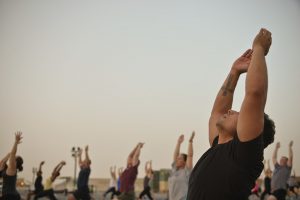
At the time of the term’s origin (estimated around the 12th century), Hatha yoga was more strong in comparison to the other more subtle practices used in health and balance (such as meditation).
The benefits of hatha yoga are broader because it is less specific in nature. If you want a gentle introduction to physically and mentally challenging yoga, consider hatha classes.
5. Iyengar
Known as the Furniture Yoga.
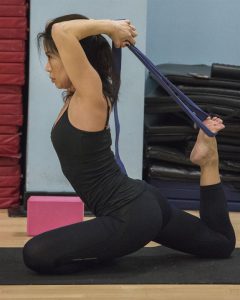
This form of yoga makes use of props (belts, blocks, blankets, etc.) to help the student perform positions accurately while minimizing the risk of strain or injury. B.K.S. Iyengar established this form of yoga in the 1970’s and are derived from Anusara and Forrest Yoga.
The benefits of yoga include accessibility to both young and old, stress relief from modern-day life, promotion of physical and spiritual balance.
6. Jivamukti
Roughly translates to “seat, connection,” referring to the relationship to the Earth.
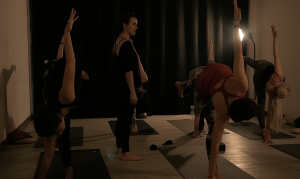
Founded in 1984 by Sharon Gannon and David Life as a philosophy based expression of physical and emotional connection to the Earth and all other beings. With the connection to ancient teachings of yoga, this style is a great introduction for beginners for both the physical aspect and the ideology of yoga-thought.
The benefits of Jivamukti yoga includes an improved connection between mind and body, improvement in one’s relationships, a dissolution of the sense of separateness, and the awareness of the oneness of being through the discovery of lasting happiness.
7. Kripalu
Roughly translates to “the compassionate one,” named after the teachings of Swami Kripalvanada.

Founded by Amrit Desai in the early 1900’s from the inspiration of his guru’s, Kripalvananda, life and teachings. This style of yoga plays with body, mind, and energy by working on a musculoskeletal level (as well as respiratory, circulatory, digestive, immune and nervous systems).
The benefits of Kripalu yoga include freedom of energy, mental clarity, physical well-being, and progression of internal healing processes.
8. Kundalini
Roughly translates to “coiled one.”

This form of yoga accesses a form of primal energy found at the base of the spine. With a full “awakening” (referring to this energy usually freed after 40 to 120 days of practice), the very energy of consciousness is awakened and breaks through self-imposed limitations. Meditations, poses, and mindfulness all play a role in this transforming style.
The benefits of kundalini yoga include uplifted mood, empowering energy, glandular system balance, body purification, and calming of the mind.
9. Prenatal
It’s in the name! Prenatal yoga is designed to help prenatal mothers as well as mothers on every phase of the birthing process (even post-birth!).

The Mayo Clinic recommends prenatal yoga because of its breathing exercises, gentle stretching, invigorating yoga postures, and relaxations. Women and yoga have had a long relationship in the Western world – it is said that Queen Victoria had 18 yoga lessons around 1870 for the beneficial effects!
If truly interested, I highly suggest reading this amazing guide (from MomLovesBest.com) for SAFE yoga practice for expectant mothers!
The benefits of prenatal yoga (recorded by MayoClinic.org) including improved sleep, reduced stress and anxiety, decreased lower back pain, decreased nausea and symptoms of carpal tunnel syndrome, reduction in headaches, and help with shortness of breath.
The most IMPORTANT benefits of this style of yoga are the strengthening, flexibility, and endurance of the muscles used during childbirth. Consider at least trying it for yourself if you’re an expectant mother!
10. Restorative
Known for its meditative stretches.

Restorative yoga is less about intensity and more about lasting effects. Because of the ease of the poses, due to the continual use of props (mostly blankets), this style is great for yoga practice at home. Each pose is meant to be held for long periods of time in supine or seated poses with the addition of bolsters, blocks, and blankets.
The benefits of this style of yoga include body support, stress relief, and opening the body through passive stretching.
11. Sivananda
Named after Swami Sivananda, whose teaching originates from 1936.

The philosophy of this style of yoga includes proper breathing, exercise, relaxation, diet, and positive thinking/meditation. Vishnu Devananda founded this form of yoga and named it after his teacher, Sivananda, who had told him to “Go to the West; people are waiting.” This style was developed to help Westerners learn to relax and live healthy lives.
The benefits of Sivananda yoga include improved flexibility and improved tone through classical and holistic approaches to Hatha Yoga.
12. Viniyoga
Roughly translates to “separation,” “detachment,” and “leaving.”
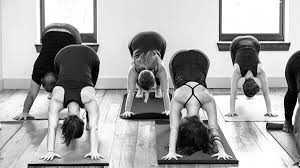
Founded by the Indian yoga teacher Tirumalai Krishnamacharya, this form of yoga has been found to be more beneficial to chronic low back pain than self-care books (according to the Archives of Internal Medicine).
Benefits of Viniyoga include relief of symptoms of arthritis, hypertension, diabetes, multiple sclerosis, scoliosis, asthma, allergies, and others. More general benefits include increased strength, the range of motion, flexibility, improved balance and coordination, and improved body awareness.
13. Vinyasa (Power)
Roughly translates to “to place,” “in a special way.” Known more as power yoga, or “flow” yoga.

Apart from attractive more active and aerobic seeking yogis, Vinyasa teaches a cultivation of awareness through movement and motion on the mat and in life. It originates from basic Hatha yoga positions but more fluid and demanding (due to the consistent movements) and is sometimes described as freestyles Ashtanga (which is traced back to 200 B.C.E.).
The benefits of Vinyasa yoga include calming, purification, increased muscles strength and flexibility, and mentality brings the mind to the present.
14. Yin
Known as the yin side of “yin and yang.”
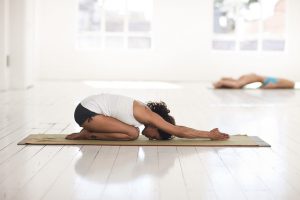
This style of yoga focuses on long-held poses and slow-paced postures from 45-secs (beginners) to 5-minutes or more (advanced). Similar forms of yoga were introduced to the Western world by Paulie Zink in the late 1970s, but Yin yoga was led by Paul Grilley (a student of Zink’s).
The benefits of Yin yoga include calming/balancing of the mind/body, stress and anxiety relief, increased circulation, improved flexibility and joint mobility, balanced internal organs and improves the flow of chi (or prana).
Conclusion
When looking at a list of 14 different styles of yoga, you might ask yourself which is best? Every style is different and every person’s needs are different – so only you can really be the judge!
If you’re a beginner, I would suggest Restorative, Jivamukti, Sivananda, or any class labelled “Hatha” (general term for yoga styles).
If you’re taking yoga classes already, you should know which styles you’ve learned and if you don’t, ask your yoga teacher! There are a lot of impostors out there so if your teacher just says “hatha” yoga, consider their credibility. It’s important that yoga teachers know the context of what they’re teaching in their classes – if they don’t know, they may not be teaching the highest quality yoga.
Thanks for reading! I hope this article has been helpful. Yoga mats are another necessary purchase, but I’ve done the research for you and have found the best price for the highest quality after comparing 40 different yoga mats!
Out of all these styles I’ve listed, which is your favorite? Which do you want to try?
Let me know in the comments below! Looking forward to hearing from everybody.
Thanks for reading!
Chase
March 2017

SOURCES:
| Mind Body Green – 14 Styles | Mayo Clinic – Prenatal Yoga Benefits
VeryWellFit – Restorative Yoga The Secrets of Yoga – Sivananda Yoga Blog – History of Sivananda |
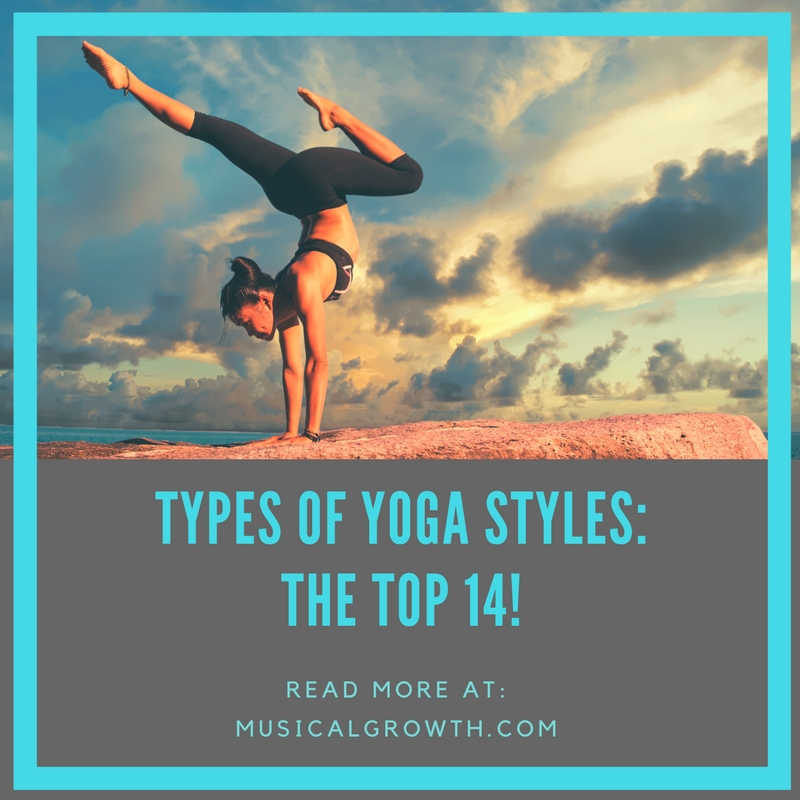


Leave a Reply